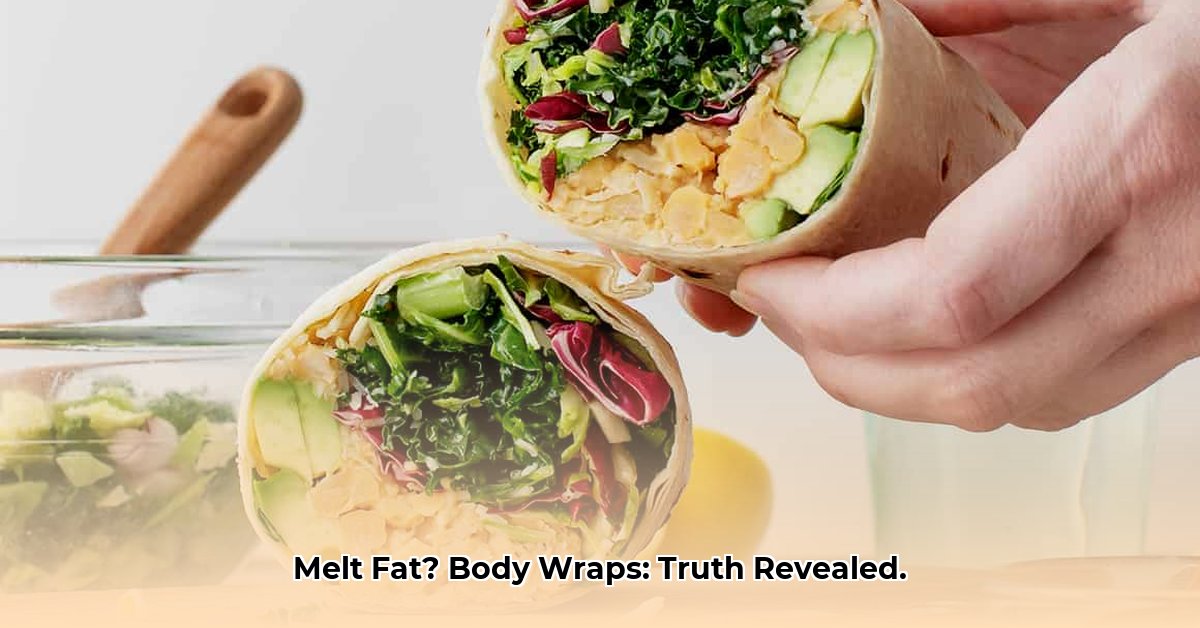
Thinking about trying a body wrap to lose weight? Many people are intrigued by the promise of rapid weight loss offered by these treatments, particularly those utilizing infrared technology. However, it's crucial to understand the science behind these claims before making a decision. This article will provide a balanced overview of body wraps, exploring their purported benefits, the supporting (or lacking) scientific evidence, and the importance of choosing reputable providers. We'll also discuss healthier, more sustainable alternatives for weight loss.
What are Infrared Body Wraps?
Infrared body wraps utilize infrared light to gently heat the body, promoting profuse sweating. This process is often compared to a sauna experience, but typically involves a more targeted application of heat. The increased body temperature leads to significant sweating, resulting in a temporary reduction in weight, primarily due to water loss.
Claimed Benefits: The Promises of Rapid Results
Marketing materials frequently highlight impressive weight loss, detoxification, and pain relief as key benefits of body wraps. They often portray these treatments as a rapid and convenient solution for weight management. However, it's crucial to examine whether these claims are substantiated by strong scientific evidence.
The Science Behind the Claims: Separating Fact from Fiction
While some individuals report feeling invigorated and experiencing temporary pain relief or improved skin appearance after a body wrap session, robust scientific evidence supporting substantial, lasting weight loss remains limited. The immediate weight loss observed is predominantly attributed to water loss through sweating, not a reduction in fat mass. This temporary loss is quickly regained upon rehydration. Claims regarding detoxification also lack strong scientific backing. Further research is necessary to definitively determine the long-term effects of infrared body wraps, if any.
What to Expect During a Session: A Typical Treatment
A typical body wrap session involves lying comfortably wrapped in a heated device for approximately 30-60 minutes. You may wear lightweight clothing or be provided with a robe. The heat intensity is usually adjustable for personalized comfort. Expect to sweat considerably—this is a normal part of the process. Hydration is paramount; consume plenty of water before, during, and after the session.
Factors Affecting Results: Individual Variability
Individual responses to body wraps vary significantly. Metabolic rate (how quickly your body processes calories), hydration levels, recent food and beverage intake, and body composition all influence the outcome. These factors highlight the unpredictable nature of results and the importance of realistic expectations.
Alternatives for Weight Loss: Evidence-Based Strategies
For sustainable weight loss, prioritize scientifically-proven methods. A balanced diet, regular exercise, and gradual lifestyle changes are far more effective than quick fixes. These approaches promote overall health and well-being, which extends beyond just weight loss. Consider consulting a registered dietitian or a healthcare professional to develop a personalized weight-loss plan tailored to your individual needs. Mayo Clinic Weight Loss Resources
Finding a Reputable Provider: Making Informed Choices
When searching for "body wraps near me for weight loss," thorough research is essential. Prioritize spas and clinics with transparent pricing and realistic descriptions of the treatment. Avoid providers making exaggerated claims or guaranteeing miraculous results. Reputable businesses will openly discuss both potential benefits and limitations. Check online reviews and don't hesitate to ask questions before committing to a session.
Understanding Potential Risks: A Balanced Perspective
While generally considered safe, body wraps carry potential risks, although infrequent. Dehydration is a significant concern, particularly if adequate hydration strategies aren't followed. Overheating is possible, especially if the heat isn't properly monitored during the session. Misleading marketing is common in this industry; be discerning and avoid providers making unrealistic claims.
Conclusion: A Realistic Assessment
Body wraps may offer temporary benefits such as improved skin appearance and temporary water weight loss, but they are not a viable solution for significant, long-term weight reduction. For sustainable weight loss and overall well-being, concentrate on evidence-based strategies such as a balanced diet, regular exercise, and lifestyle changes guided by healthcare professionals. While a body wrap may be an occasional treat, it shouldn't be relied upon for substantial or lasting weight management.